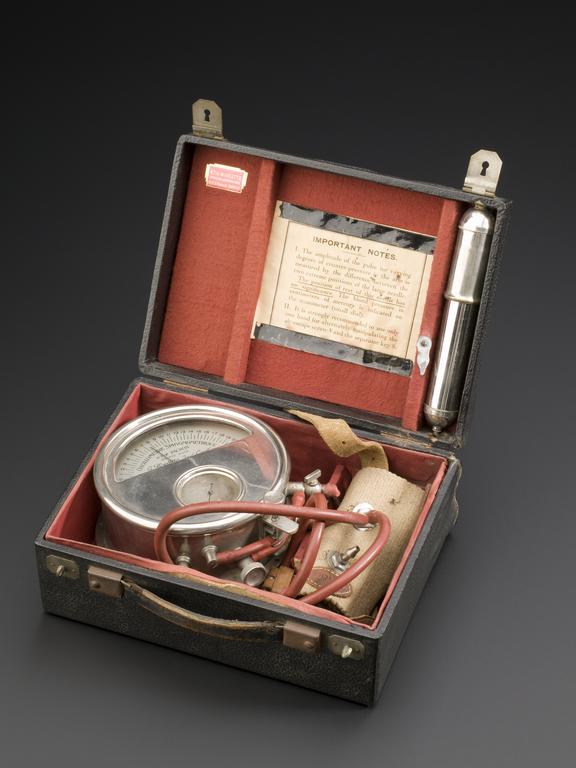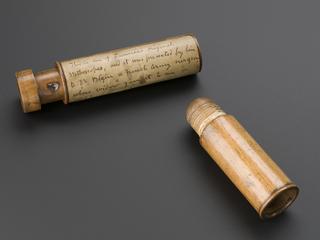






Pachon oscillometer in leatherette case, for measurement of diastolic pressure, owned by Sir Thomas Lewis (1881-1945), by Boulitte, 15-21 rue Bobillot 13E, Paris, France, 1919-1925.
The Pachon oscillometer is a sphygmomanometer, an instrument that measures the pressure, rate and variations of the pulse. The upper and lower limit of blood pressure is referred to as the systolic and the diastolic. This means the force that blood flows with from the heart into the arteries and the force as the heart relaxes and fills again with blood. Physicians have measured the upper, systolic pressure since the 1800s. However, the lower limit had been harder to determine. French physiologist Michel Victor Pachon (1867-1938) invented this oscillometer to measure this diastolic pressure.
The cuff was placed around the arm and inflated at the elbow to obstruct the pulse. The difference between the maximum and minimum oscillation of the needle was the diastolic pressure. The oscillometer was made in Paris by instrument maker G. Boulitte and was used by leading British cardiologist Sir Thomas Lewis (1881-1945).
Details
- Category:
- Clinical Diagnosis
- Object Number:
- 1980-1381
- Materials:
- case, leatherette and fittings, brass (nickel plated)
- Measurements:
-
overall: 105 mm x 245 mm x 180 mm,
- type:
- sphygmomanometer
- credit:
- University College Hospital, London




